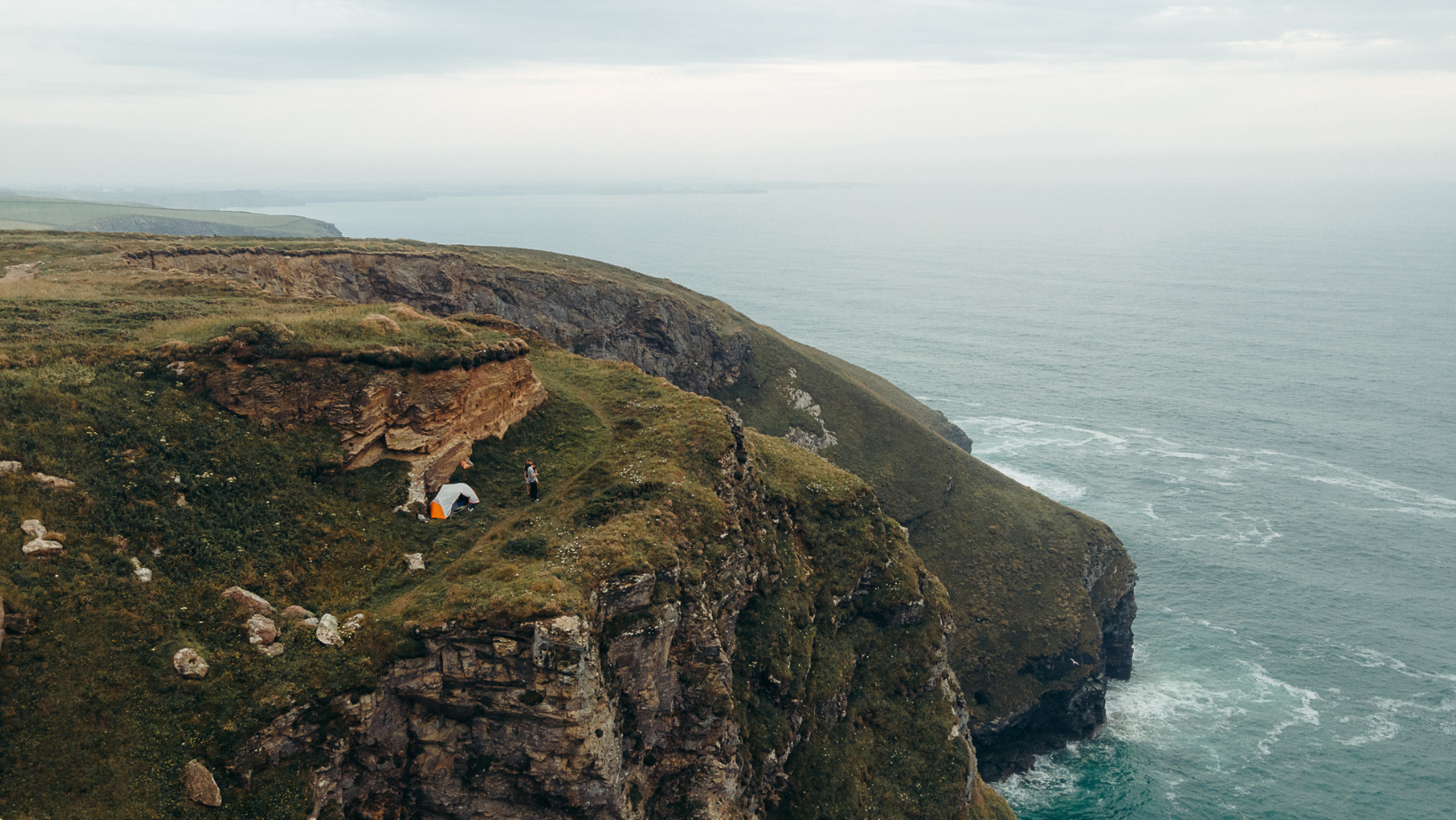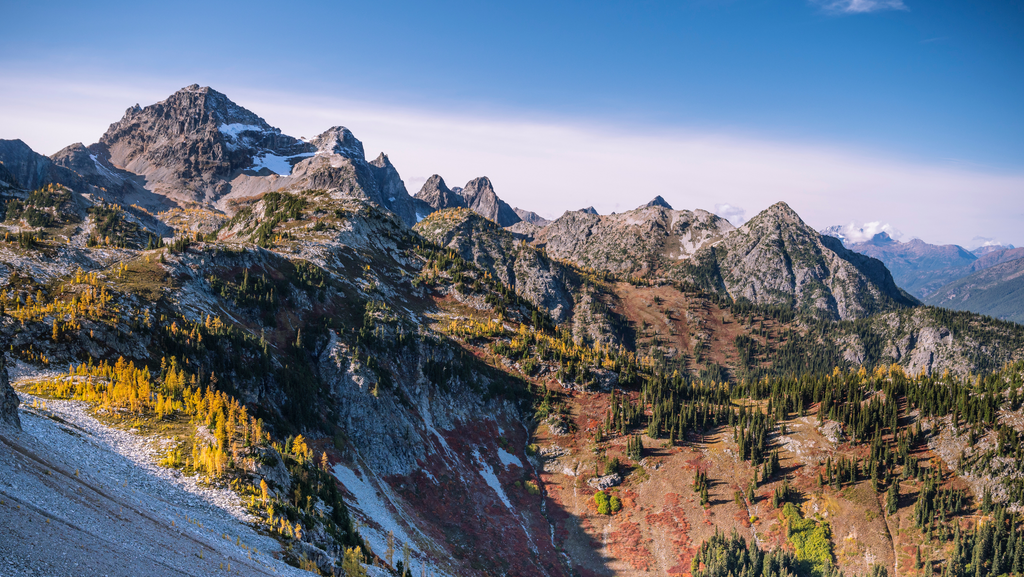National Parks That Don't Need A Reservation To Go Backpacking

The country's most popular national parks are now demanding reservations for the upcoming summer months. This isn't always a negative thing, since limiting the number of tourists means less strain on the park's animals and natural ecosystems, so it's not necessarily a bad idea to keep visitor numbers under control.
That is why this summer, instead of rushing to make reservations, we believe that this summer is the perfect time to be creative and explore options other than the big-name theme park destinations. Many of the world's most popular national parks may be found only a short drive away and you'll discover and learn to appreciate the natural region that offers all of the jaw-dropping splendor of the outdoors’ most popular tourist destinations, but with fewer visitors. See which national parks will need reservations this summer and where you can go instead by reading on.
Rather than going to Yosemite, visit Sequoia and Kings Canyon instead

Yosemite National Site, like it did last year, has implemented a summer visitation reservation system, something that the immensely popular park had been exploring and has given consideration even before the pandemic outbreak. While the popularity of Yosemite is well-deserved, and hands down one of the best, we suggest visiting the park during the winter months, when snow blankets the valley and you can even go skiing at Yosemite's own Badger Pass.
However, during this summer, you can visit Sequoia and Kings Canyon National Parks, two national parks that are governed as a single trek that can compete with the grandeur of Yosemite while displaying a beauty of their own. Sequoia National Park is not only the oldest national park in California, having been established six days before Yosemite, but it is also the site of the world's tallest tree, known as the giant sequoia. The General Sherman tree, which stands 275 feet tall and has a base circumference of 102 feet, has the biggest mass of any living thing on the planet. One of its lowest branches is more than 130 feet above the ground and is as huge as a street tree on either side.
It is estimated that the combined area of Sequoia and Kings Canyon is around 1,350 square miles, with elevations ranging from the lowest to the highest heights of approximately 13,000 feet. Nature's variety in terms of ecosystems, as well as the plants and animals that live there, is really amazing. As a result, these parks have a greater number of high peaks in the Sierra Madre range than Yosemite, including Mt. Whitney, which stands at 14,505 feet above sea level and is the tallest mountain in the lower 48 states.
The glaciers that formed Yosemite's iconic granite features also made their way through these parks, which explains why they are so similar to Yosemite. It is possible to see the Grand Sentinel from Zumwalt Meadows in Kings Canyon, which is a massive slab of granite that rises 3,000 feet above the valley level, nearly the same distance that El Capitan is above the valley floor. Moro Rock, located in Sequoia Canyon, is a granite outcropping that protrudes from the slope. An adventurous climb up a dizzying stairway cut into the rock by the Civilian Conservation Corps in 1931 rewards hikers with a breathtaking view of the valley and the snow-capped Sierra Nevada mountains in the distance.
Rather than going to Acadia, visit New River Gorge instead

Acadia National Park in Maine is characterized by wooded mountains that rise above a rugged, island-dotted shoreline. Those who climb Cadillac Mountain in Acadia before sunrise are among the first people in the nation to see the sun rise over the watery horizon. However, just a heads up, since it is the only national park in the Northeast, and naturally, a rather small park, Acadia becomes easily overcrowded in the summer, making it unsafe to visit.
Visitors will need to make reservations to visit the park during the day from late May through October this year, and they will need to make separate appointments for the morning visit to Cadillac Mountain. We urge that East Coasters go south, rather than north, to get their fill of nature.
In December of 2020, the New River Gorge was officially designated as a national park for the first time. The New River is so magnificent — luring white-water aficionados for decades with its 69 miles of white-water stretches — that it has already been designated as a National River. However, considering the fact that the New River is older than the Appalachians themselves, the name of the watercourse is a bit of a conundrum. And through ages of time, it has chiseled the ground, resulting in a breathtaking gorge. A total of more than 1600 climbing routes can be found on the sandstone cliffs, which rise as high as 1,500 feet and provide some of the greatest rock climbing in the nation.
If you've been looking forward to some trekking in Acadia, New River Gorge's 70,000 acres will more than meet your needs. If it's vistas you're looking for, you'll find them in plenty, whether on the short but spectacular Bridge Trail amble or on longer excursions through the Glade Creek Area, which are both recommended.
Rather than going to Rocky Mountain, visit Great Sand Dunes instead

Booking your reservations to visit Colorado's Rocky Mountain National Park between late May and early October will be available starting on May 1 of this year. There are several reasons why people visit this park, including the superlative and the common reason is that it is the highest park in the United States, and its Trail Ridge Road is the nation's highest continuous roadway. While our Rocky Mountain tour will provide you with lots of suggestions for having a relaxing vacation away from the crowds, it's worth noting that Colorado is home to several natural regions that are well worth exploring.
Visiting a different Colorado national park this year, one that boasts some strange superlatives of its own, is something we suggest doing. In North America, the Great Sand Dunes National Park and Preserve is home to the biggest dunes on the continent, the highest of which is 750 feet tall and covers an area of thirty square miles.
Because the park's alpine tundra reaches to nearly 13,000 feet above sea level and has five lakes and numerous other smaller bodies of water, visitors may still experience the state's higher elevation scenery while visiting Great Sand Dunes. Additionally, you'll discover prairie grasslands with yuccas, prickly pear cactuses, and other distinctive flora that has adapted to the high and dry climate in this area, in addition to woods that include Rocky Mountain junipers, bristlecone pines, and pinyon trees at higher altitudes.
Rather than going to Glacier, visit North Cascades instead

Visitor attractions in Montana's Glacier National Park include rugged peaks, alpine lakes, evergreen woods, as well as glaciers and other natural features. However, the park will be establishing a reservation system for the Going to the Sun route for the next summer; you may begin reserving those tickets on recreation.gov on April 29 and continue to do so until September 1.
There are a variety of ways to enjoy the park outside the "Going to the Sun" route, which may become rather crowded at certain times. Great news is if you're going backcountry at Glacier, you won't need to make a reservation to camp and hike into the wilderness.
However, here are some quick facts: Glacier National Park is not the national park with the greatest number of glaciers in the continental United States. There are approximately 300 of them in North Cascades National Park in Washington state, which is really where this photo was taken from. You can trek right up to glaciers like the Sahale Glacier, but the journey is seven miles round trip and involves a roughly 4,000-foot elevation rise in the process. Alternatively, you might trek the easier 3.7-mile Cascades Pass Trail up to the mountains, which are crowned with sparkling glaciers, from the same trailhead.
Besides lush woods and mountain lakes, the North Cascades has over 500 lakes and ponds of its own, including the Olympic National Park. An extensive list of creatures that call this region home includes grizzlies and black bears; gray wolves; wolverines; cougars; and the lynx; elk, deer; otters near the rivers; small picas in the higher altitudes; and elk, moose, and deer; as well as grizzlies and black bears. And it's just a three-hour drive from Seattle to get to this beautiful park.
So there you are! Four on our list of alternatives that you might want to add into your radar for a backcountry getaway this summer. We hope you learned something new. Happy trekking! Cheers!

Leave a comment
All comments are moderated before being published.